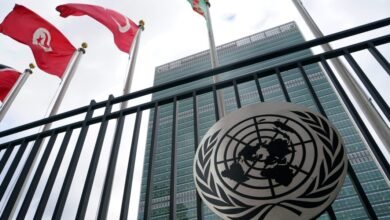MAHA is reshaping Amazon and other consumer packaged goods companies’ supply chains more than tariffs right now


U.S. consumer packaged goods (CPG) giants are racing to get ahead of President Donald Trump’s Make America Healthy Again movement. Looming food regulatory changes and social media-driven consumer behavior changes are reshaping the intricate web of ingredient sourcing, manufacturing and marketing, and shifting supply chains.
Keychain, an AI-powered sourcing platform that serves some of the world’s biggest brands and retailers, including Amazon‘s Whole Foods, 7-Eleven, and General Mills, saw an uptick in projects flagged as “natural” from 6.81% in August 2024 to 21.7% by February 2025, according to company data.
Keychain founder and CEO Oisin Hanrahan told Fortune CPG companies and stakeholders in the industry are “more focused” now on RFK Jr.’s influence and the MAHA movement than they are on tariffs.
“From where we sit at Keychain and the conversations we’re having daily, MAHA is reshaping how CPG companies think about formulation and marketing, especially what counts as ‘natural,’” Hanrahan said in an exclusive interview.
For the sourcing platform, projects categorized as “natural” include keywords such as: natural, clean ingredients, clean label, no artificial ingredients, no artificial flavors, organic ingredients, better-for-you, non-GMO, and no seed oil. RFK Jr. has previously said Americans are being “unknowingly poisoned” by seed oils, despite scientific research refuting this claim.
Keychain has tallied more than 10,000 natural projects for each of the past three quarters, which amount to more than $3 billion in value.
Processed-food titans and produce growers are modifying advertisements and products to profit from the MAHA movement, which in some cases, has led to jumps in sales, The New York Times recently reported.
Keychain, which just closed a $30 million Series B funding round led by Wellington Management and existing investor BoxGroup, serves eight of the top 10 American retailers as well as small businesses. Hanrahan said everyone wants a piece of the MAHA pie.
“Brands are actively rethinking sourcing strategies, in some cases shifting to new manufacturing partners altogether to meet ‘natural’ positioning requirements,” Hanrahan said. “That’s not a small task.”
Sourcing reformulated ingredients, especially those that meet a “better-for-you” threshold, often comes with longer lead times, higher costs, or the need to entirely revamp supply chains, Hanrahan said. Notably, smaller brands looking to tweak their products feel the squeeze the hardest, lacking the financial and operational flexibility of the CPG giants.
Even for top retailers, rapid adaptation is key to staying relevant.
“Larger brands might be better-positioned to absorb those costs or shift schedules, but even they’re feeling pressure to move quickly and avoid falling behind the consumer narrative,” Hanrahan said.
But brands aren’t just looking to profit from the health trend, they also are staring down a regulatory reckoning underway.
Former President Joe Biden’s administration banned Red Dye No. 3 in January just before he left office, but Trump moved in April to expedite the shift as part of a larger phase out of petroleum-based food dyes from the American food supply.
Keychain’s real-time data and search tools have let brands and private labels dissect their sourcing at the most granular level, Hanrahan said.
“There’s more focus now, not just on finding an American manufacturer, but on breaking down every component—manufacturing, ingredients, packaging—into its origin and compliance,” Hanrahan said. As MAHA standards tighten, brands have turned to dual-sourcing or dual-manufacturing strategies, a shift first seen during the COVID-19 pandemic.
As for price changes to come from the MAHA shift, Hanrahan said counteracting forces will most likely keep food products’ sticker price steady.
“Reverting back to more natural ingredients actually reduces the cost, in some cases, of the raw ingredients and the bill of materials,” he said. “But shelf life goes down and production costs go up, which means you need better logistics and fresher supply chains.”
Some manufacturers and brands are willing to make the jump for fear of losing health-conscious consumers and looming regulatory changes.
After months of urgent responses to tariffs and trade disruptions, the action and anxiety in CPG boardrooms is now shifting to food regulation—what gets banned, reclassified, or relabeled next.
“The market is already behaving as if the rules are here,” Hanrahan said. “Brands that are unable to keep up risk being left behind.”
Source link



